"News is something someone wants to suppress. Everything else is advertising."
-- Lord Northcliffe
Our county is home to countless subcultures. They range the full spectrum, from straight to strange, and rare is the person who doesn't belong to at least three or four of them. Each has its own particular set of rules and social norms. For the Humboldt County surf scene, the first rule is: You don't talk about the Humboldt County surf scene.
The logic, as we understand it, goes something like this. Surfing in Los Angeles and Orange County sucks. It's way too crowded, and the locals down there are rude and brutal to outsiders. We don't want that up here, so we will be rude and brutal to the LA and Orange County surfers who dare to enter our waters, so as to discourage their ways from taking root here. And we will never speak of our surf spots publicly.
There's a couple of flaws in this line of thinking, starting with the most obvious -- probably a majority of Humboldt County "locals" are themselves from southern California. As one frustrated newcomer put it on an online message board: "There's no real locals up here, they just came up to go to college 15 to 20 years before you and stayed. You can be like them too." (This is technically incorrect -- there are a few real locals here -- but the point largely stands.) More to the point, though, it's kind of sad that we all become what we hate. In this case: insular, xenophobic, secretive.
Surfer omertà is enforced to an astonishing degree. Two years ago, when we asked Journal contributor Jennifer Savage, the chair of the local chapter of the Surfrider Foundation, to write a surfing story for the Journal, she refused to mention any but the most obvious surfing spots on the North Coast. (See "Camel Rock rights and wrongs," Aug. 16, 2007). This week, she declined to participate in any way. A year earlier, National Geographic Adventure magazine featured a story by writer Dan Duane about surfing at Big Flat, the famous hike-in spot on the Lost Coast north of Shelter Cove. Amazingly, Duane never typed the words "Big Flat" in the story, instead substituting the fictional name "Ghost Point." (See "Surfing the Perfect Break on California's Lost Coast," National Geographic Adventure, September 2006). After spending a good number of the article's paragraphs on the pressure he felt from locals and others to keep the Big Flat secret, complete with implied threats of violence, Duane ends the story with an incredible cop-out:
*During the long, quiet march, I watched seals watching us from offshore; I saw an osprey hunting the shallows for fish; and I decided that whatever you think about the surfer obsession with secrecy, whether it sounds like selfishness, silliness or soulfulness, the end result isn't really such a bad thing. Anyone who wants to find Ghost Point won't have much trouble -- I told you that it's somewhere along the Lost Coast, and the truth is, the break is known to virtually every surfer with a clue in Northern California. But maybe there's something great about the feeling that the world is still full of mysteries; ones you'll have to sort out for yourself. And maybe there's something great about places, real or imagined, where discoveries will always be waiting to be made. Because at some level, that's what it's all about. *
As the big winter swells approached, we contacted a few Humboldt County surfers to ask them for interviews, or to write something for this package. Then we gave up. To a person, they refused. But as Dan Duane knew, all the basic information is already out there, in books and on the Web. In California, anyway, the beaches and shorelines are owned by the public. If you want to surf, you can. If you have a hankering to get to know the glorious Pacific Ocean up close and personal, then you should do it. You shouldn't be a dick to other people, but you already knew that.
The following are just a few of the dozens of worthwhile surfing spots in Humboldt County. We're just skimming the surface and we don't claim to be experts in the matter, but these and regular first-hand observation should get you going.
SURFING SPOTS
Patrick's Point
Inside Patrick's Point State Park. (Take the Patrick's Point state park exit about five miles north of Trinidad.) Call ahead for hours/fees/camping arrangements (677-3570). Once inside, follow Mussel Rock Trail down to the beach.
The authorities disagree wildly about the best time to surf this left-handed point break. Guisado and Klaas recommend high tide, because of dangerous submerged rocks; Wright says medium tide; Surf Forecast says low tide (see bibliography). Everyone seems to agree that it's an excellent spot for winter surfing -- provided you know what you're doing. The swell here can be large and dangerous. On the plus side, it doesn't seem to be as crowded as other spots.
Guisado and Klaas also give the thumbs-up to the beach break at Agate Beach, also located inside the park, which they say can "range from fun and friendly to a heavy, aggressive beach break." They do say that it regularly produces good, consistent waves.
Camel Rock/Moonstone Beach
These are the two most well-known surf spots in Humboldt County -- so well known, in fact, that there are endless complaints of overcrowding. Moonstone Beach is located right off the Highway 101 exit at Westhaven. For Camel Rock, take the same exit and drive a mile or so up Scenic Drive until you see the giant two-humped rock in the water.
Both spots are good for beginners; the main difference being that there's more ocean real estate available at Moonstone. The waves at this beach break both left and right off of the shifting sandbars beyond the low-tide line. This isn't the ideal season, apparently: Guisado and Klaas say that "[t]he winter surf can be big and fun, though spring and fall months tend to bring waves with less size but better shape."
Camel Rock is smaller than Moonstone, and so the competition is somewhat fiercer and the scene more depressing -- all the more so because it's a fine break. The Wannasurf verdict: "When it's going, it can't be beat." Though both Camel and Moonstone are classified as spots friendly to beginners, don't be fooled -- the current can be just as powerful here as elsewhere in the county.
Samoa/Bunkers/Harbor Entrance
The Samoa Peninsula -- the long spit of land between Humboldt Bay and the ocean out along Highway 255 -- is home to a few strong breaks and one devastating one. There are beach breaks all along the peninsula; look for the parking spot pull-outs on the west side of the road south of the Samoa Bridge.
One spot worthy of special mention is Bunkers, out near the end of the peninsula. Take the first right after entering the Coast Guard complex, park in the lot and walk down to the beach. Both Wannasurf and Surf Forecast rate it as suitable for all skill levels, but there can be strong currents here and you should probably be a strong swimmer to attempt it. Wannsurf says that the break will provide both left- and right-hand waves, and works best at mid- to high tide with the swell coming in from the west. It can be crowded.
The entrance to the harbor, way out at the end of the spit at the jetty, is huge and scary. If you're learning about surf spots from this guide, you do not surf here. "Humboldt Harbor requires experience and demands respect," say Guisado and Klaas. "Pros and kamikaze only," says the Wannasurf write-up. "The place rips your wetsuit off if you screw up on a big day and you'll be lucky if you pop up from the most violent underwater thrashing you've ever experienced in less then 10 seconds." Still, might be worthwhile to take a drive out to the north jetty and watch the pros -- or kamikazes -- tow in on jet skis to tackle the massive waves.
South Jetty
The Samoa Peninsula's mirror image, across the harbor entrance encircling the southern half of Humboldt Bay, is a huge nature preserve known as the South Spit. You get there by turning off Highway 101 at Hookton Road, just south of College of the Redwoods, and heading down Hookton and Table Bluff Road toward the ocean. Drive to the end of the road, where you'll find a parking lot adjacent to the South Jetty. Walk to the beach.
Wright lists the beach break here as "a good summer spot." Guisado and Klaas concur, adding that "winter surf can be big but not as organized or predictable." Everyone agrees that you want to watch for swell coming from the south or southwest, which can result in well-shaped and fast medium-sized waves.
Centerville Beach/Cape Mendocino
The southern half of the county's coast is home to the most wild and undeveloped section of coast in the continental United States -- the so-called "Lost Coast." This is a rocky, remote section of land full of good surf. If you can get to it.
One of the more popular spots is Centerville Beach, a ways outside the city of Ferndale. Guisado and Klaas praise its "outside peaks with long lines." They and Wright both assert that it can work at any time of year with any swell, but Surf Forecast believes that a southwest swell works best. Take Centerville Road from Ferndale and drive west to the county park.
Writing in 1973, Wright reveled in Cape Mendocino: "Miles and miles of unridden reef and beach breaks ... an untapped supply of surf," he wrote. Probably not the case anymore, but this is still a vast conglomeration of surfable spots far out in the boonies. Wright and Guisado and Klaas agree that you can find nearly any kind of wave here at any time -- beach breaks and reef breaks, lefts and rights, summer and winter and anything in between. To get there, drive west on Highway 211 -- the Mattole Road -- until you reach the ocean. Then you're there.
Both these spots are a good distance from civilization, so don't go alone and be sure you know what you're doing.
Shelter Cove/Big Flat
There are numerous beach, reef and point breaks in and around Shelter Cove, the tiny, half-deserted town at the southwest corner of the county, right on the Mendocino County line. A whole cluster of them can be found on the rounded beach to the south of the town's airport. They include, at the far end of the cove, No Pass -- "a big, tubular left," according to Wright. Though Wright has plenty of praise for the cove's other spots, No Pass is the only one to rate an entry on the more up-to-date Wannasurf site.
The legendary Big Flat, Humboldt County's worst-kept secret, is reachable only by airplane or difficult nine-mile hike up the Lost Coast Trail from Shelter Cove. Google it: People who have surfed the spot revel in its big, beautifully shaped waves and long rides, as well as its stunning location -- "[I]t may be the only true wilderness point break in the lower 48," wrote Dan Duane in National Geographic Adventure.
Again: Know what you're doing. You're a million miles from nowhere.
SURFING SAFETY
Ensign Tim Mosher of the U.S. Coast Guard, a surfer and a Humboldt County native, can boil his main safety tips down to three: "Know your limitations. Know where you're surfing. Either surf with a friend or tell a friend of your whereabouts and when you're planning to get out of the water."
The ocean hereabouts is nothing to fool around with, especially in winter. Rip tides can develop upon a slight shift in current. Hidden rocks and reefs can knock you unconscious in a moment. Sneaker waves can rip you bodily from the shore and carry you away out to sea. If you're not a strong swimmer, a powerful break in Humboldt County can mess you up in any number of ways -- and even if you are, you'd better know what you're getting into.
"A lot of times surfers get in trouble because they go out in a place they're not familiar with," Mosher says. This year, the Coast Guard has already rescued one surfer who got swept out to sea at Camel Rock -- they're happy to do it, but of course it'd be better for everyone concerned if they didn't have to.
One more piece of advice: gear. Surfers from elsewhere may not be accustomed to donning a thick 5 mil suit, complete with hood and booties, but that's what you're going to need in the cold Humboldt County waters. Don't skimp.
Sharks? Mosher is more or less a fatalist when it comes to risking an encounter with a Great White. "That's something you kind of accept," he says. "You're in their environment." Otherwise, the best advice seems to be, first, to get out of the water as quickly as possible and, second, to fight back if attacked. Use your board or any other available tool to beat the fish in the soft spots, especially the eyes or gills.
Happy as he was to share safety tips, Mosher declined to list his favorite surf spots.
SURFING ETIQUETTE
To repeat: Journal contributor Jennifer Savage, a surfer, refused to participate in helping us put this story together. She refused, even, to discuss issues like local surfing etiquette, which one would think would help newbies and out-of-towners respect the Humboldt County scene. However, we assume that the advice she gave in her Journal story of Aug. 17, 2007, on surfing at Camel Rock, still holds:
"Listen, if you're new in town, be respectful. If you're new to surfing, be doubly so. Pay attention to the line-up. Beginners, stay out of the way. Go to Moonstone until you have a sense of what you're doing. When paddling for a wave, look over your shoulder. If someone else is closer to the peak, either stop or be prepared to pull back if he or she catches it. (If you're a guy, don't assume a girl's not going to catch the wave. That happens too often, but you don't hear about it because most girls are too nice to cuss you out.) If you're an experienced surfer, don't make the beginner feel worse about kooking out, just accept the apology gracefully. If you find yourself in front of someone, direct your board over the back of the wave to get out of the way. Apologize immediately. Pay your dues."
SURFING RESOURCES/BIBLIOGRAPHY
Books
Surfing California**, by Bank Wright. Mountain & Sea Publishing, 1973. Self-published hippie-era guidebook to the coast. You can still buy it on Amazon. The more comprehensive of the two books we consulted, with dozens of Humboldt County spots listed.
Surfing California**, by Raul Guisado and Jeff Klaas. Globe Pequot Press, 2005. Has much more detail than its predecessor on certain Humboldt County spots, but lacks its encyclopedic range. Functions as a decent general travel guide for the surf-oriented, throwing in notes on area history and community character.
Web sites
Wannasurf. wannasurf.com. "A surf atlas made by surfers for surfers." Worldwide, but features a dozen or so Humboldt County spots. Lots of pictures, maps and smack talk between locals and the rest of the world.
Surf Forecast. surf-forecast.com. Focuses on the science of surfing, with startlingly detailed wind, weather and tide predictions combined to create hour-by-hour ratings of 18 Humboldt County surf spots. Probably best to groundtruth its observations before taking them as gospel.
Camel Rock Surf Cam. www.camelrocksurfcam.com. When it works, it's a live picture of the Camel Rock waves and some basic weather information.
Blogs
House of Sand and Fog. jennifersavage.wordpress.com. By Journal contributor Jennifer Savage. One of the goals of the blog is to chronicle every surf session the author undertakes -- without saying where she undertakes them, of course. To repeat yet again, Savage absolutely refused to take part in any aspect of this story.
Surfrider Humboldt. surfriderhumboldt.wordpress.com. Also by Journal contributor Jennifer Savage, who doubles as the chair of the local chapter of the Surfrider Foundation. Weather alerts, beach closures and occasional updates on the internal business of this nonprofit group, which advocates for clean oceans.

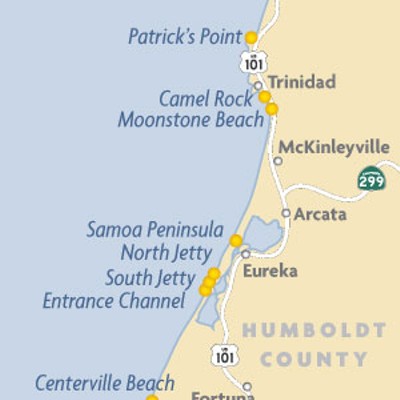
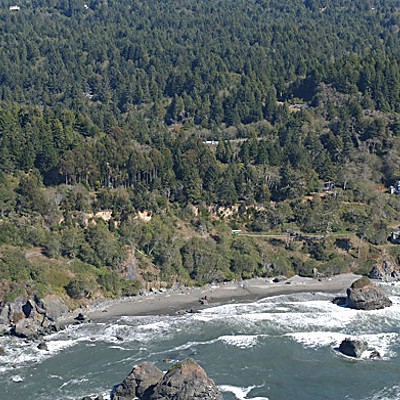
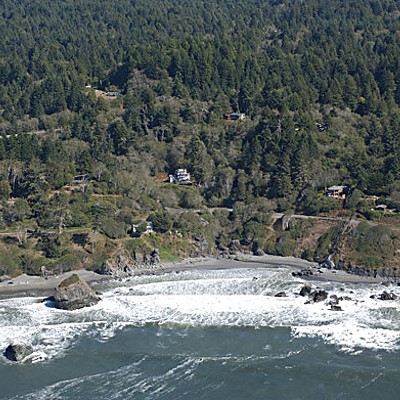
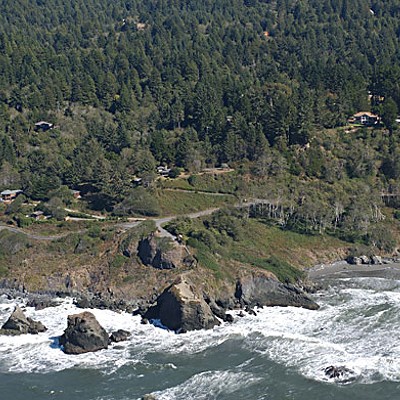
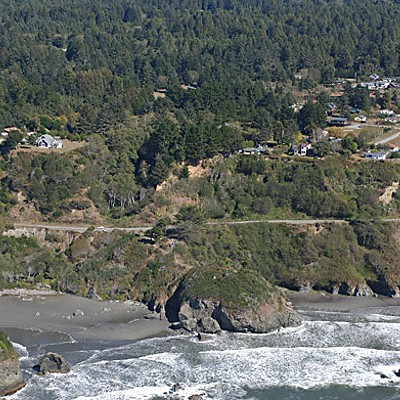
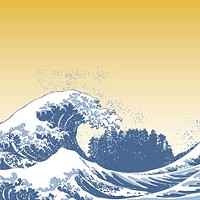
Comments (58)
Showing 1-25 of 58